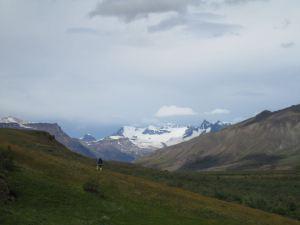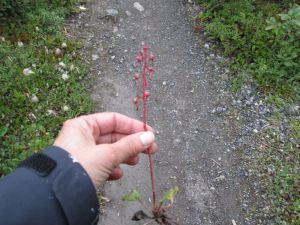 I was contacted recently by Oscar Jaslowski of Microryza (a web platform that allows scientists to post research ideas and collect contributions from web visitors) about a project getting underway in Alaska by Ellen Jorgensen of Genspace. He suggested it might make a good post for ConservationBytes.com, and I agreed. Thanks for the contribution, Oscar.
I was contacted recently by Oscar Jaslowski of Microryza (a web platform that allows scientists to post research ideas and collect contributions from web visitors) about a project getting underway in Alaska by Ellen Jorgensen of Genspace. He suggested it might make a good post for ConservationBytes.com, and I agreed. Thanks for the contribution, Oscar.
–
There’s nothing so final as watching the bush pilot take off in his tiny plane, leaving you stranded in the Alaskan backcountry. We had plenty of food for a three-day expedition, but no satellite phone or any other way to contact anyone. In Alaska, the phrase ‘primordial indifference’ pretty much sums up your relationship with the vast, glacier-carved landscape. Mother Nature does not care if an ant like you lives or dies.
Our destination, the Skolai Valley, is located about 480 km (300 miles) east of Anchorage, in the heart of Wrangell-St. Elias National Park. At a whopping 5.3 million hectares (13 million acres), it is the largest national park in the United States, and probably one of the least-visited. Much of its forbidding territory is snow-covered and similar to the Himalayas. In fact, the size of the massive ice fall that towers over the town of McCarthy, the origin of our flight, is exceeded only by one near Mt. Everest. But winding through the glaciers and snowfields are alpine valleys that are a backpacker’s dream. And Genspace, the nonprofit science-based organisation that I direct, was lucky enough to have received funding in 2012 to launch this expedition to Skolai.
Our mission: to barcode wild Alaskan plant life. Two of us headed down into the river valley and the other two climbed up to the level of the mountain pass to survey more alpine vegetation. We were carrying portable plant presses – normally something too bulky for backpacking, but necessary for this trip.
It really surprised me when the experts at the New York Botanical Garden explained that identifying plants is still done the way it was 100 years ago. You dig up the plant, roots and all, press it between two pieces of newspaper and dry it out flattened. Then an expert has to look at the sample and use visual characteristics to identify it. You have to be a taxonomist to decipher the jargon in the plant manuals: “awl-shaped stigma lobes”, “dehiscent fruits” and “anthers without basal appendages” are not normally part of my working vocabulary. Wouldn’t it be great if this process were made more accessible to everyone?

Alaska is home to some of the hardiest, yet fragile plant species. The effects of global warming are all too apparent here. Adding to the Barcode of Life database will help scientists in their ecological surveys, allow amateurs to participate and contribute, and help environmentalists catalog the effects of climate change. In addition, teaching and enabling people to learn hands-on barcoding contributes to scientific, technology, engineering and mathematics (STEM) learning, adult science literacy, and a deeper appreciation of DNA-based technology, and what it can do to enrich our lives.
Genspace, the community lab I co-founded, is uniquely suited to this type of collaborative citizen science. For the past three years we have engaged the public through classes and hands-on projects such as this one. Being actively involved in the research gives people a better understanding of its value, and raises public awareness of the power of this technology and also the precarious situation our precious natural resources face with the advent of global warming.

